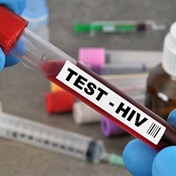The revised recommendations, published in the August 16 issue of the Journal of the American Medical Association, were to be presented Sunday at the International AIDS Conference in Toronto.
The guidelines focus on four areas: when to start antiretroviral therapy; what to start; when to change; and what to change.
The 16-member panel continues to recommend the start of antiretroviral therapy in all HIV-infected people with symptoms and in those with no symptoms after the CD4 cell count falls below 350/uL and before it declines to 200/uL.
ARV choice refinedSince the last edition of the guidelines, findings from clinical trials and cohort studies have led to refinements in the choice of initial antiretroviral regimen, the panel members noted.
"The recommended initial regimen remains a combination of 2 nucleoside (or nucleotide) reverse transcriptase inhibitors (nRTIs) with either a non-nucleoside reverse transcriptase inhibitor (NNRTI) or a protease inhibitor (PI) boosted with low-dose ritonavir," the panel wrote.
"Given the high degree of compatibility of the recommended components of these regimens in treatment-naive persons with drug susceptible virus, the choice of regimen centres on acceptability; predicted tolerance; pill burden; comorbid conditions; short-term, mid-term, and long-term adverse event profiles; and successful alternatives should the initial regimen fail and drug resistance emerge. The successful outcome of several 'switch studies' suggest that the initial choice of regimen does not preclude safely changing drugs once viral suppression is achieved," the panel said.
Adherence is vitalThe panel added that adherence to antiretroviral therapy in the short- and long-term is vital for treatment success and must be continually reinforced with patients.
Antiretroviral therapy should be changed when toxicity or intolerance makes it necessary or when the treatment fails.
The panel also wrote that the virologic target for patients with treatment failure is now a plasma HIV-1 RNA level below 50 copies/mL. This goal is achievable in many patients.
Once antiretroviral therapy is started, plasma HIV-1 RNA level should be checked every four to eight weeks until it's below the limits of detection. After that, HIV-1 RNA level should be checked three to four times a year.
"Given the rapid evolution of knowledge, clinicians are challenged to stay abreast of new information that can affect practice. Therapeutic choices rooted in the pathogenesis of HIV disease and individualisation of therapy to maximise benefit are the principles that remain constant in a rapidly changing environment," the panel wrote. – (HealthDayNews)
Read more:HIV/Aids Centre
August 2006




 Publications
Publications
 Partners
Partners














